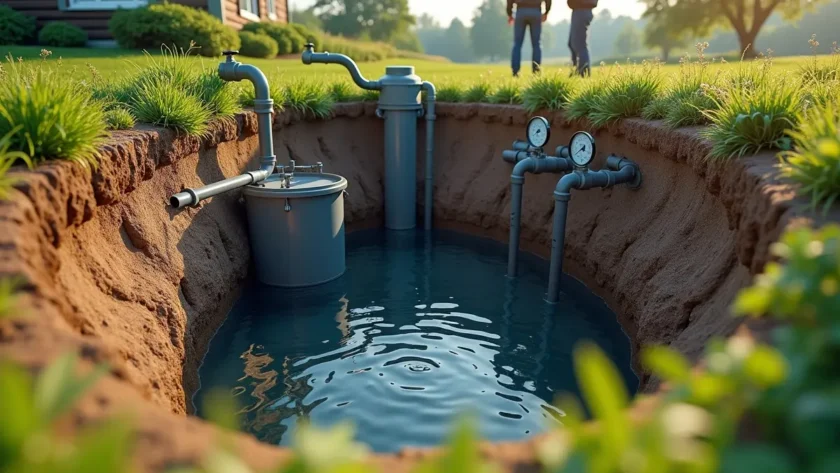Clean water is essential for healthy communities, thriving wildlife, and sustainable environments. Unfortunately, traditional septic systems can be a significant source of excess nitrogen in groundwater and local waterways, putting water quality at serious risk. Homeowners and communities looking to safeguard their water resources are increasingly turning to nitrogen-reducing septic systems, which provide a much-needed solution to combat nitrogen pollution and preserve vital aquatic ecosystems for future generations.
Nitrogen pollution not only encourages harmful algal blooms but also threatens drinking water supplies and recreational water bodies. Addressing this problem with modern treatment methods is a critical step toward protecting both environmental and public health. Nitrogen-reducing systems work by significantly lowering nitrogen discharge, thereby improving water quality and supporting a wide array of ecosystem and community benefits.
Choose an experienced septic system supplier who understands both the technical and environmental aspects of advanced treatment systems. This supplier expertise starts the process of choosing the right solution for your home. The right supplier can guide you through the process and ensure your installation meets all regulatory and performance standards.
Contents
Understanding Nitrogen Pollution
Nitrogen is naturally present in the environment and is required for plant growth; however, when concentrations rise above natural levels, it poses a serious threat to water resources. As nitrogen enters lakes, rivers, and coastal waters, it fuels the rapid growth of algae. These algal blooms can block sunlight and, upon decomposition, strip water of oxygen, causing large-scale fish kills and loss of aquatic habitat—a process known as eutrophication.
This is not just an environmental concern—public health risks also rise, as contaminated drinking water supplies have been linked to various illnesses and long-term health outcomes. To help reduce nutrient pollution and protect water quality, working with a septic system supplier to ensure proper system design, installation, and maintenance can significantly reduce nitrogen runoff.
The Role of Septic Systems in Nitrogen Discharge
Conventional septic systems are widespread in rural and suburban communities throughout the United States. While they are effective at removing many pollutants, most are not designed to address nitrogen-related contamination.
After the septic tank treats household wastewater, it travels to a drain field for further filtration. However, much of the nitrogen remains dissolved there, leaching steadily into groundwater. In dense or coastal areas, this accumulation causes widespread nitrogen pollution. This pollution also results in reduced water clarity and harm to shellfish and fisheries.
How Nitrogen-Reducing Septic Systems Work
Nitrogen-reducing septic systems rely on advanced biological or mechanical treatment stages that specifically target nitrogen removal. Common methods include aerobic treatment units, which use oxygen-rich environments to enhance the breakdown of ammonia and organic nitrogen, and biofilters, which utilize layers of media populated with beneficial bacteria.
These systems encourage the conversion of ammonia into nitrate. This nitrate eventually converts into nitrogen gas. Nitrogen gas is a harmless, naturally abundant atmospheric component. This process removes over 90% of the nitrogen before the effluent re-enters the environment, reducing the threat to local water bodies.
Benefits of Upgrading to Nitrogen-Reducing Systems
- Environmental Protection: Considerable reduction in nitrogen discharges means fewer algal blooms and healthier water ecosystems. Waterways remain open and safe for swimming, fishing, and wildlife.
- Public Health Protection: Lower levels of nitrate in drinking water sources help prevent ailments such as methemoglobinemia (“blue baby syndrome”) and reduce the risk of certain cancers.
- Increased Property Value: Modern wastewater treatment systems can raise property appeal and market value, especially in environmentally sensitive regions where regulations are tightening.
- Community Resilience: Cleaner water benefits everyone, protecting local businesses and supporting sustainable development goals.
Available Grants and Incentive Programs
For homeowners and communities facing the costs of upgrading, various incentive programs are available. Local and state agencies have launched grant initiatives to offset installation expenses.
In Nassau County, for example, the S.E.P.T.I.C. program offers significant financial support to encourage adoption of nitrogen-reducing systems, helping to restore and protect water quality across Long Island. These grants not only make upgrades affordable but also help homeowners meet new regulatory requirements without bearing the full financial burden.
Installation and Maintenance Considerations
Successfully implementing a nitrogen-reducing septic system requires proper planning and professional oversight. Homeowners should always work with qualified engineers and licensed contractors who have experience with advanced systems. These specialists can advise on local zoning, soil conditions, system sizing, and all necessary permitting processes.
- Costs: While installation is more expensive than standard septic tanks, most grants help cover the difference. Long-term operating costs can be controlled with regular care.
- Regular Servicing: Like all sophisticated technology, these systems require scheduled inspections and maintenance. Consistent upkeep preserves their effectiveness, prolongs lifespan, and prevents unexpected repairs.
- Documentation: Maintain a record of all maintenance and service visits to support compliance and future property transactions.
Conclusion
Protecting water quality is a responsibility that begins at the household level. Advanced nitrogen-reducing septic systems are a cost-effective, sustainable solution for communities ready to take action against nutrient pollution.
Upgrading your septic system is a critical investment in your property, your community, and the environment. This upgrade is possible with financial support from grants, effective installation partners, and diligent maintenance. By choosing to make this change, homeowners set an example of environmental stewardship. This action ensures that clean water remains a legacy for generations to come.




